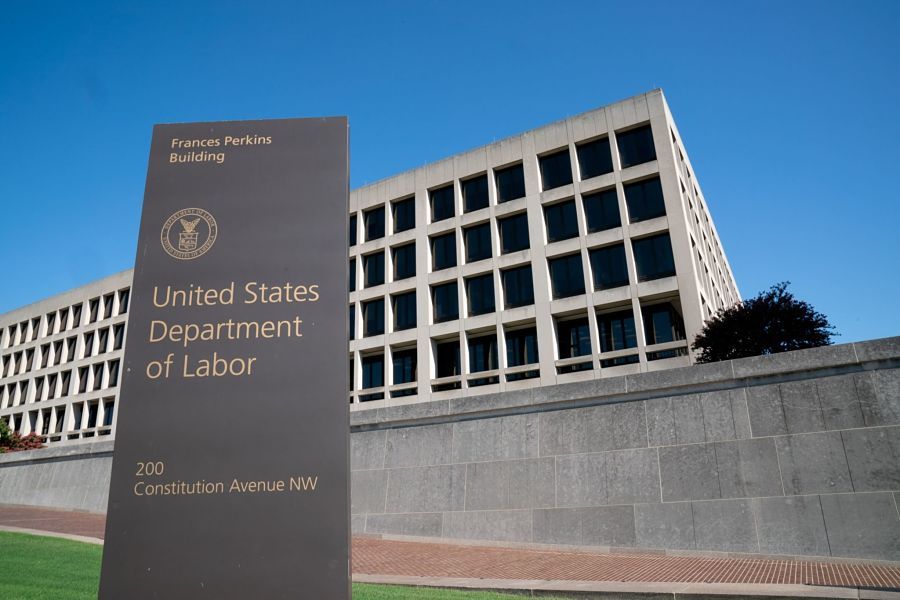A final regulation released by the Department of Labor on Tuesday will reassure retirement plan advisers they can utilize sustainable investing without running afoul of federal law, experts said.
The DOL rule allows – but does not require — plan fiduciaries to consider climate change and ESG factors in selecting investments, DOL Assistant Secretary Lisa Gomez said.
The rule replaces a regulation promulgated in late 2020 at the end of the Trump administration that Gomez said had a “chilling effect” on the use of ESG investment for retirement saving. The Trump rule required retirement plan advisers only to consider so-called pecuniary factors, or those that have a material effect on risk and return.
Even though ESG issues can influence the performance of a retirement plan, fiduciaries hesitated to incorporate them out of fear of violating the previous rule, said Gomez, who heads the Employee Benefits Security Administration.
The new rule “takes the thumb off retirement plan managers in making investment decisions,” Gomez told reporters in a conference call. “The final rule is necessary to reverse the 2020 rule’s chilling effect on the appropriate integration of ESG factors into the investment selection and asset management process. This rule simply gives fiduciaries the room they need to let fiduciaries fidush.”
The rule — Prudence and Loyalty in Selecting plan Investments and Exercising Shareholder Rights — also allows ESG options to be used as qualified default investment alternatives in plans and includes provisions related to the use of ESG factors in making proxy voting decisions. It will become effective 60 days after it’s published in the Federal Register.
Advocates of ESG investing embraced the final rule.
“The DOL deserves a lot of credit for this rule, which will safeguard American workers’ retirement savings from the financial risks of climate change,” said Steven Rothstein, managing director of the Ceres Accelerator for Sustainable Capital Markets. “We’ve seen the growing risks of fires and floods. It’s important to build these considerations into long-term retirement planning.”
Only a small number of retirement plans have ESG options, said Bryan McGannon, managing director of U.S. SIF the Forum for Sustainable and Responsible Investment. The DOL rule will encourage more use of ESG for retirement saving.
“The rule recognizes the consideration of ESG criteria can help protect the long-term interests of retirement beneficiaries and it should be treated like any other investment criteria used by plan fiduciaries,” McGannon said. “In the next few years, more and more plans will be offering sustainable options as a result of this rule.”
Whether ESG investing is encouraged or discouraged varies between presidential administrations. Democrats tend to promote it while Republicans try to rein it in.
The back-and-forth frustrates Ethan Powell, chief executive of Impact Shares, an ETF platform. It undermines plan fiduciaries’ confidence in ESG investing if the rules change every few years.
“It’s a good step forward,” Powell said of the latest DOL ESG rule. “But until we have legislation that codifies ESG’s place in a diversified retirement plan, we will continue to have a lack of adoption of ESG principles relative to other sophisticated economies.”
The political heat on ESG has increased dramatically in the last couple of years, as the Biden administration launched a government-wide effort to combat climate change. That initiative has involved the DOL first halting and then replacing the Trump ESG rule. The Securities and Exchange Commission also has proposed its own climate change and ESG rules.
Republican lawmakers in Congress and at the state level have resisted. They accuse Democrats of pursuing a “woke” agenda that emphasizes social policy over investment returns and economic growth.
The Biden DOL’s final ESG rule is an improvement over its original proposal because the final rule took “a more neutral stance” toward ESG investing, said Brad Campbell, who served as DOL assistant secretary for EBSA during the George W. Bush administration.
“It makes clear fiduciaries may appropriately consider ESG factors but does not mandate their consideration,” said Campbell, who is a partner at Faegre Drinker Biddle & Reath. “The final rule returns the authority to fiduciaries to decide what is relevant to their investment decision making and reiterates that the goal is to provide for the economic security of plan participants.”
One change from the original proposal to the final rule is the removal of language that said plan fiduciaries “may often” have to consider ESG factors in their investment decisions. Critics said the “may often” construction essentially made ESG a requirement for retirement plans. The final rule says that analyses of risk and return may include the economic effects of ESG, a senior DOL official told reporters.
Such changes take the “thumb off the scale” that favored ESG investing, Campbell said.
“This rule doesn’t allow fiduciaries to place political considerations ahead of participants’ economic interests,” Campbell said.
The DOL received about 900 comment letters and more than 20,000 petitions. There’s a good chance opponents will file a lawsuit against the final rule. McGannon said it will withstand legal challenges because it adheres to federal retirement law, the Employee Retirement Income Security Act.
“It looks like DOL did a thorough job to make sure the final rule is consistent with the intent of ERISA,” McGannon said.








